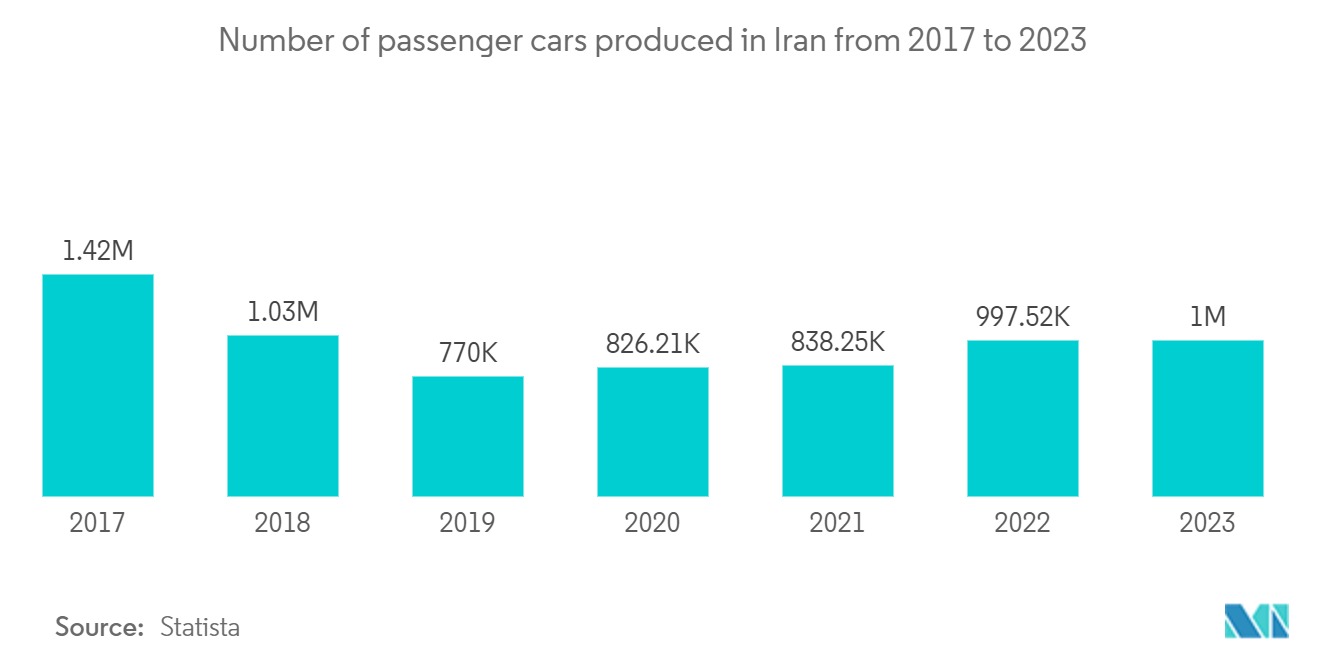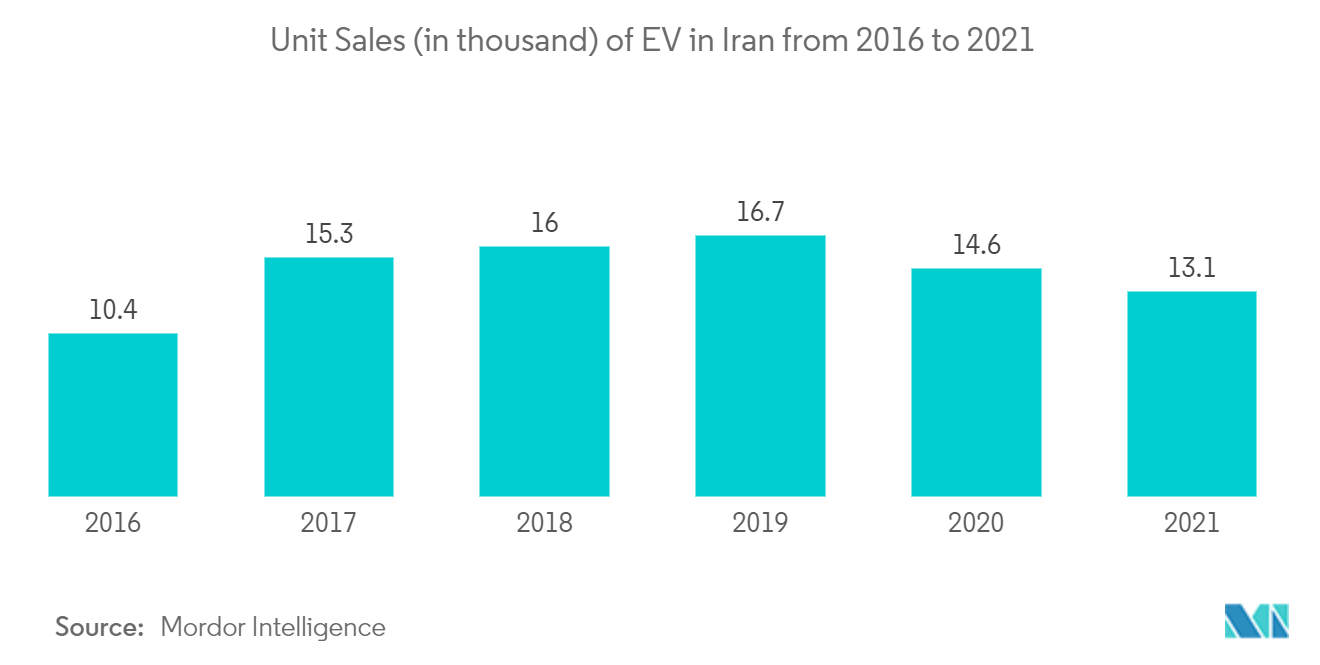Market Trends of Iran Automobile Industry
Growing Passenger Car Sales to Have a Positive Impact on the Market
In recent years, the Iranian automobile market has experienced a significant boost due to the burgeoning sales of passenger cars. This surge in demand for passenger vehicles has contributed to the automobile industry's expansion and positively impacted the country's overall economic landscape. This trend reflects a changing consumer preference and an optimistic outlook for the Iranian automobile industry. For instance,
- According to the International Organization of Motor Vehicle Manufacturers (OICA), Iran's car output reached 1.188 million units in 2023 and took 16th place in the world car production.
Several factors contribute to the growing popularity of passenger cars in Iran. A key driver is the rising disposable income among the middle-income population, enabling more individuals and families to afford personal vehicles. Additionally, the increasing urbanization and changing lifestyles have heightened the need for convenient and efficient transportation, fueling the demand for passenger cars.
Government initiatives and policies have played a crucial role in fostering the growth of the automobile industry. In Iran, efforts to stimulate economic development have led to the implementation of supportive measures, such as reduced import tariffs, subsidies, and financing schemes, making it more feasible for consumers to purchase passenger cars. These policies create a favorable environment for manufacturers and buyers, driving market expansion.
The Cabinet of Ministers has requested the Ministry of Industry (MoI) to prepare an action plan for manufacturing and importing EVs.
- The MoI subsequently introduced a plan for manufacturing EVs that prioritized the public transport fleet and set a three-phase project for passenger vehicles to be manufactured on new and existing platforms. The MoI also proposed an initiative to offer incentives to manufacturers and consumers of EVs, which is pending adoption by the Cabinet of Ministers.
Advancements in automotive technology have also contributed to the appeal of passenger cars in Iran. Manufacturers are introducing vehicles with enhanced fuel efficiency, safety features, and connectivity options, meeting consumers' evolving preferences. This emphasis on innovation attracts buyers and positions the Iranian automotive market as a hub for modern and technologically advanced vehicles.
Overall, the passenger cars segment’s growth is expected to impact the Iranian economy positively. The government aims to address several challenges to ensure the industry grows sustainably.

Government Regulations May Boost EV Sales in the Iranian Automobile Market
The Iranian government has shown increasing interest in promoting the adoption of electric vehicles (EVs) to reduce air pollution and dependence on fossil fuels and boost the domestic automobile industry. While the overall EV market in the country remains nascent, government regulations are expected to play a vital role in accelerating its growth.
The Iranian government has recognized the importance of reducing the environmental impact of transportation and has introduced a series of policies and incentives to encourage the adoption of electric vehicles. These initiatives include tax credits, subsidies, and reduced import tariffs on electric vehicles and their components. Such measures make EVs more affordable for consumers and create a conducive environment for manufacturers to invest in EV production. For instance:
- In October 2023, the Deputy Minister of Industry, Mine, and Trade for General Industries announced Iran's intention to collaborate with knowledge-based companies and domestic auto manufacturers to develop and produce domestically designed electric vehicles by 2025.
In 2023, Iran claimed to have identified lithium reserves, which, if confirmed, could amount to 8.5 million metric tons, or the second-largest such reserves in the world. This development is expected to boost Iran's EV manufacturing industry and help cut the cost of locally manufactured electric vehicles in the coming years.


